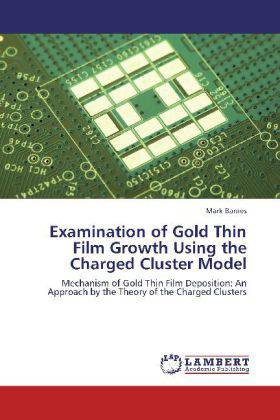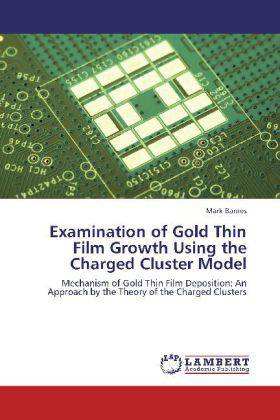
Door een staking bij bpost kan je online bestelling op dit moment iets langer onderweg zijn dan voorzien. Dringend iets nodig? Onze winkels ontvangen jou met open armen!
- Afhalen na 1 uur in een winkel met voorraad
- Gratis thuislevering in België vanaf € 30
- Ruim aanbod met 7 miljoen producten
Door een staking bij bpost kan je online bestelling op dit moment iets langer onderweg zijn dan voorzien. Dringend iets nodig? Onze winkels ontvangen jou met open armen!
- Afhalen na 1 uur in een winkel met voorraad
- Gratis thuislevering in België vanaf € 30
- Ruim aanbod met 7 miljoen producten
Zoeken
Examination of Gold Thin Film Growth Using the Charged Cluster Model
Mechanism of Gold Thin Film Deposition: An Approach by the Theory of the Charged Clusters
Mark Barnes
Paperback | Engels
€ 58,45
+ 116 punten
Omschrijving
Thin film science plays a crucial role in high-technology industries with many applications in electronics, energy generation and conservation strategies. Crystallization from the vapor phase is an important method for the preparation of semiconductors, insulators and metals. Therefore, it is crucial that the mechanism of thin film growth be understood. Unfortunately, this is not the case and developments in thin films have been made mostly by trial and error, and explained using an outdated mechanism. Generally, the mechanism of thin film deposition by CVD/PVD is considered a surface reaction with atoms and/or reactive species produced in the gas phase of the reaction chamber. Gas phase nucleation is generally considered a detriment to thin film quality, and engineers tend to assume that this process does not occur to a significant extent under ordinary thin film deposition conditions. An alternative mechanism, the charged cluster model, suggests instead that a thin film is a three dimensional assembly of charged nanoparticles that nucleated in the gas phase. This book shows that the charged cluster model applies to metal thin film deposition by thermal evaporation.
Specificaties
Betrokkenen
- Auteur(s):
- Uitgeverij:
Inhoud
- Aantal bladzijden:
- 132
- Taal:
- Engels
Eigenschappen
- Productcode (EAN):
- 9783848431793
- Verschijningsdatum:
- 6/04/2012
- Uitvoering:
- Paperback
- Formaat:
- Trade paperback (VS)
- Afmetingen:
- 152 mm x 229 mm
- Gewicht:
- 204 g

Alleen bij Standaard Boekhandel
+ 116 punten op je klantenkaart van Standaard Boekhandel
Beoordelingen
We publiceren alleen reviews die voldoen aan de voorwaarden voor reviews. Bekijk onze voorwaarden voor reviews.











